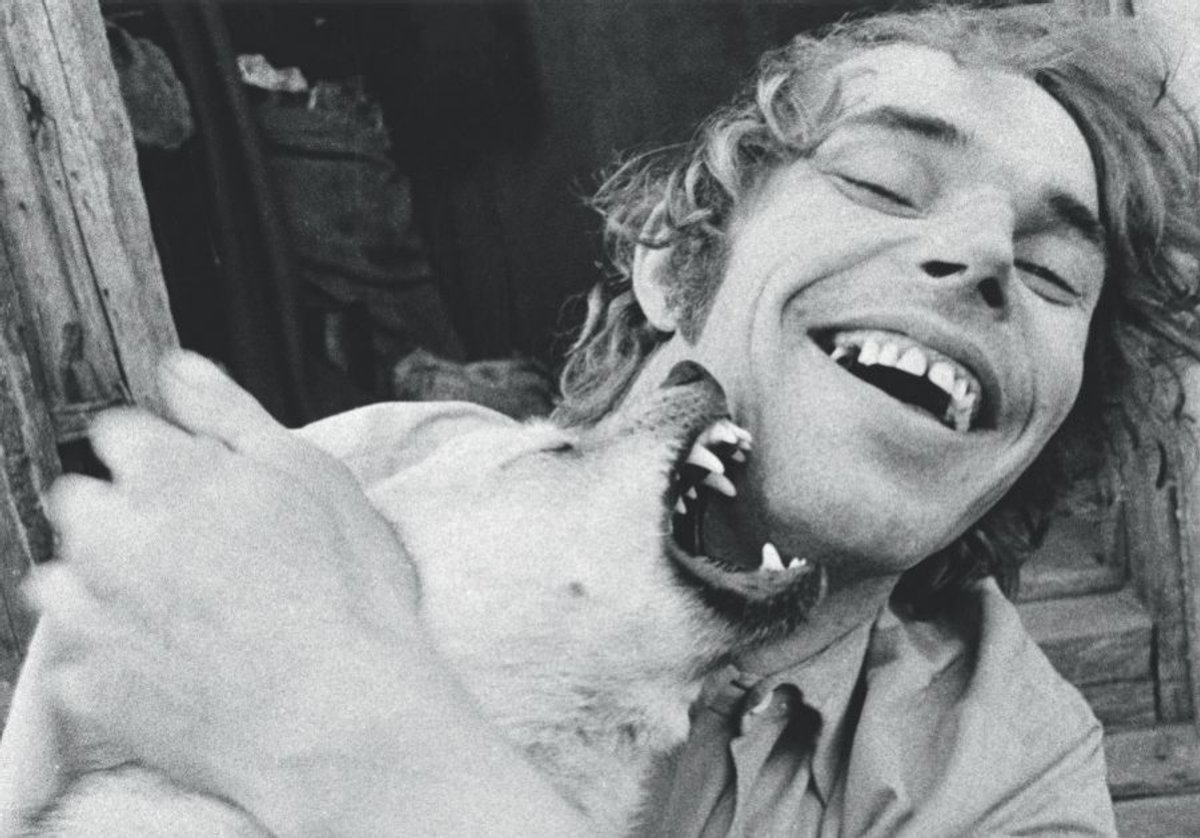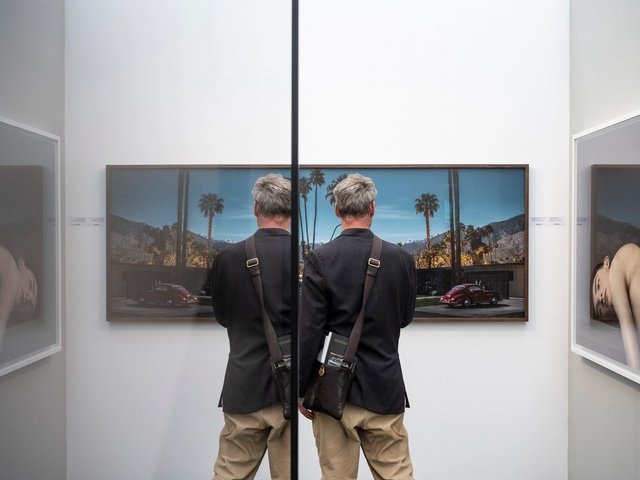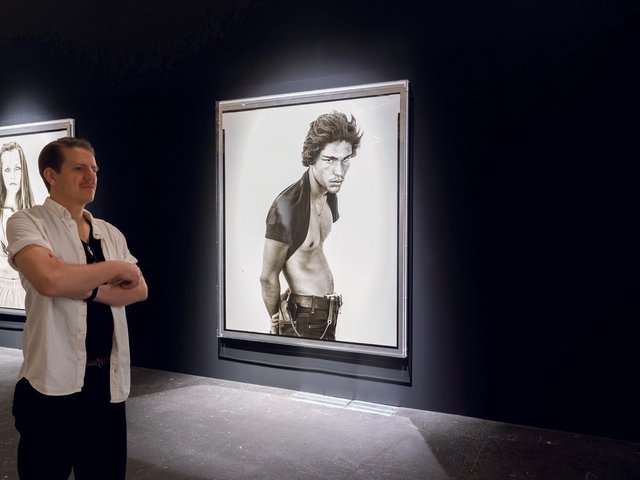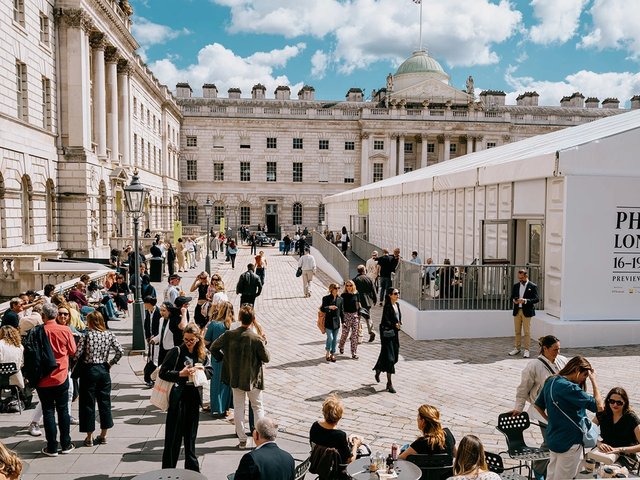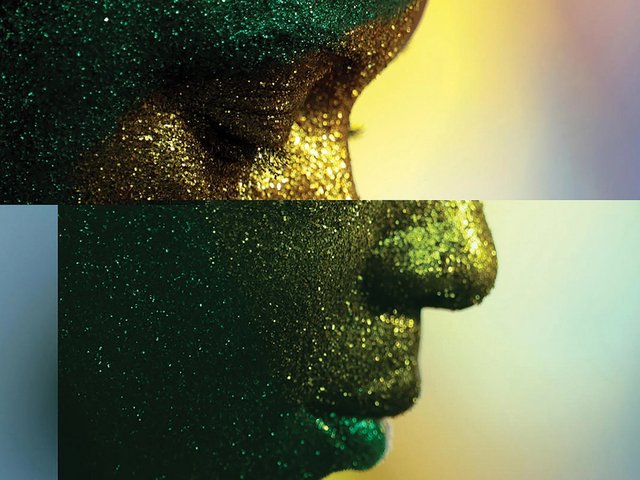At its best, photography can help us see the world from someone else’s point of view—a quality that felt particularly urgent at Paris Photo (until 10 November), which opened to VIPs on 6 November as Donald J Trump was announced as the US president-elect.
Paris Photo, widely considered to be the world's leading photography fair, returns this year to the newly renovated Grand Palais, whose roof on this occasion was not leaking. The move "underscores the growing prominence of the event", says the fair's director, Florence Bourgeois, with this edition bringing "exciting new initiatives like the Voices sector, where impressive sales were recorded". Meanwhile "a strong international presence, particularly from American institutions like the Museum of Modern Art in New York (MoMA), highlights this year's global appeal, while the digital sector is gaining traction".
“Sales are strong and collectors are actively engaged,” said the veteran dealer Howard Greenberg shortly after closing a deal on a hand-signed work by Alberto Giacometti for €28,000 at the booth of his eponymous New York gallery.
Meanwhile, Cologne's Thomas Zander sold a Larry Sultan piece for €58,000, while a work by Massimo Vitali went for $73,000 at Edwynn Houk. Fraenkel from San Francisco, which represents Hiroshi Sugimoto, sold works ranging from €20,000 to €500,000, according to representative for the gallery.
Maubert Gallery from Paris sold out their entire presentation of Nicolas Floch’s column-shaped works, each commanding a price of €20,000, while Nathalie Obadia (Paris, Brussels) sold works by Youssef Nabil, Andres Serrano and Valérie Belin, fetching between €15,000 and €30,000 each.
In terms of British photographers, London’s foremost young portrait artist Jack Davison, originally from Essex, continues his rise with a solo exhibition at Cob Gallery, with his work selling for between $7,000 and $12,000.
At the lower price points, Paris Photo has long served as a platform for the best emerging lens-based artists to launch their new series in book form. Serious collectors in photography will be well served by paying attention to the publishing section of the fair.
The strongest section at this year's fair is also a non-commercial one. Located upstairs in the Grand Palais’ Salon d’Honneur, The Forms of Things, The Forms of Skulls, Forms of Love is an exceptional exhibition of Soviet-era Lithuanian photographs recently discovered in the archives of the Bibliothèque nationale de France. The show, curated by Sonia Voss, is a follow up to Restless Bodies, which she brought to Les Rencontres d’Arles in 2019 and explored the lives of photographers working in East Germany before the fall of the Berlin Wall in 1989. Here, she has discovered and resurrected a group of photographers from the Lithuanian School of Photography who, working in the lineage of their Surrealist forefathers, created a collective body of intimate, rebellious and highly expressive photographs. Each had to produce with scant resource and under the auspices of a pitiless state. Their creations now sing from the wall.
Across town, the Centre Pompidou is hosting the major survey Surréalisme (until 11 January), that marks a century since the deviant artistic movement was founded in France. The movement's presence can be strongly felt at the fair, thanks to the “curated path” organised by the prominent independent filmmaker Jim Jarmusch, of works on show at the fair that are influenced by Surrealism.
While Jarmusch’s own photographs are not much more than loyal homages to Diane Arbus and August Sander, his abilities as a curator are impressive. His selection includes some obvious choices: Man Ray, Dora Maar and Daido Moriyama. But he has also picked out unusual compositions by photographers as diverse, in form and figuration, as Gordon Parks, Peter Hujar, Xiu Liang and Seydou Keïta.
Ahead of a forthcoming solo show at London’s National Portrait Gallery, the US artist Diana Markosian is launching her new, Aperture-published book, Father, a decade-long diaristic unpacking of estrangement and rapprochement with the father she lost as a child, while Dewi Lewis, working out of his home in Stockport, is bringing to the fair On Mass Hysteria, the new monograph by the Spanish artist Laia Abril, which looks dispassionately at our anthropological understanding of Mass Psychogenic Disorder, where large groups of people, living in communities experiencing collective stress, experience uncontrollable motor symptoms simultaneously.
Another strong presentation comes from Sam Wright, an independent photographer from Yorkshire who learnt, as a young man, that his great-grandmother had been forced to denounce her Irish Traveller heritage in order to enter her husband-to be’s family. The realisation led Wright to travel tirelessly, for the last five years, across the UK’s north and the Republic of Ireland, where he photographed horse fairs frequented by Traveller and Romany Gypsy communities. The resulting book, Pillar to Post, published by Gost, is a close, raw and often beautiful document, prints from which will likely be offered on the fair circuit in the future.
Paris Photo is also paying attention to what is termed ‘digital’ photography. The relationship between the established fine art industry and the new pioneers of the metaverse remains strained and uncertain. Yet the fair’s Digital sector, now in its second edition, got off to a strong start, with 10 out of 15 galleries in the section reporting sales on the first day.
One of the most intriguing booths in the fair came from The Fellowship, which displayed the American artist Trevor Paglen’s ongoing Evolved Hallucinations series, a deeply research exploration of how AI machines produce representations what it considers to be our physical reality. Paglen’s images (are they Paglen’s? are they images?) are produced by a generative adversarial network that is trained to recognise, classify and thus generate ‘new’ images. The Fellowship reported that 11 animation works from the series sold for $3,000 each, while 300 still image works from the same series sold for $750 a piece. The gallery LaCollection also sold out of Jack Butcher’s Latent Series—a collection of 80 unique works, including both physical prints and NFTs—for a total of around €300,000.
Another highlight is The Green Ray, a fascinating body of work from the French-Moroccan artist Mustapha Azeroual and the curator Marjolaine Lévy, who together won the 2024 edition of the BMW Art Makers prize. Through the programme, the pair gained a combined grant of €18,000 and a research and production budget of €15,000.
They spent the money by accruing, from sailors afloat on long seafaring journeys in the isolated high seas of the Arctic, Indian and Pacific oceans, simple iPhone pictures of sunrises and sunsets—"the sort of images we all have on our camera roll,” Azeroual said. By isolating and expanding pixels in these snapshots of elemental light and water, Azeroual and Lévy have created alchemical compositions of pure colour, that, like a kaleidoscope, change according to one’s angle of view. A sunset, a spectacle we all consider each day, one that marks, like a metronome, the passing of time for each of us on the thing we call Earth, abstracted into an ever-morphing, ever-changing play on the nature of perspective—a shift in which now feels more necessary than ever.


